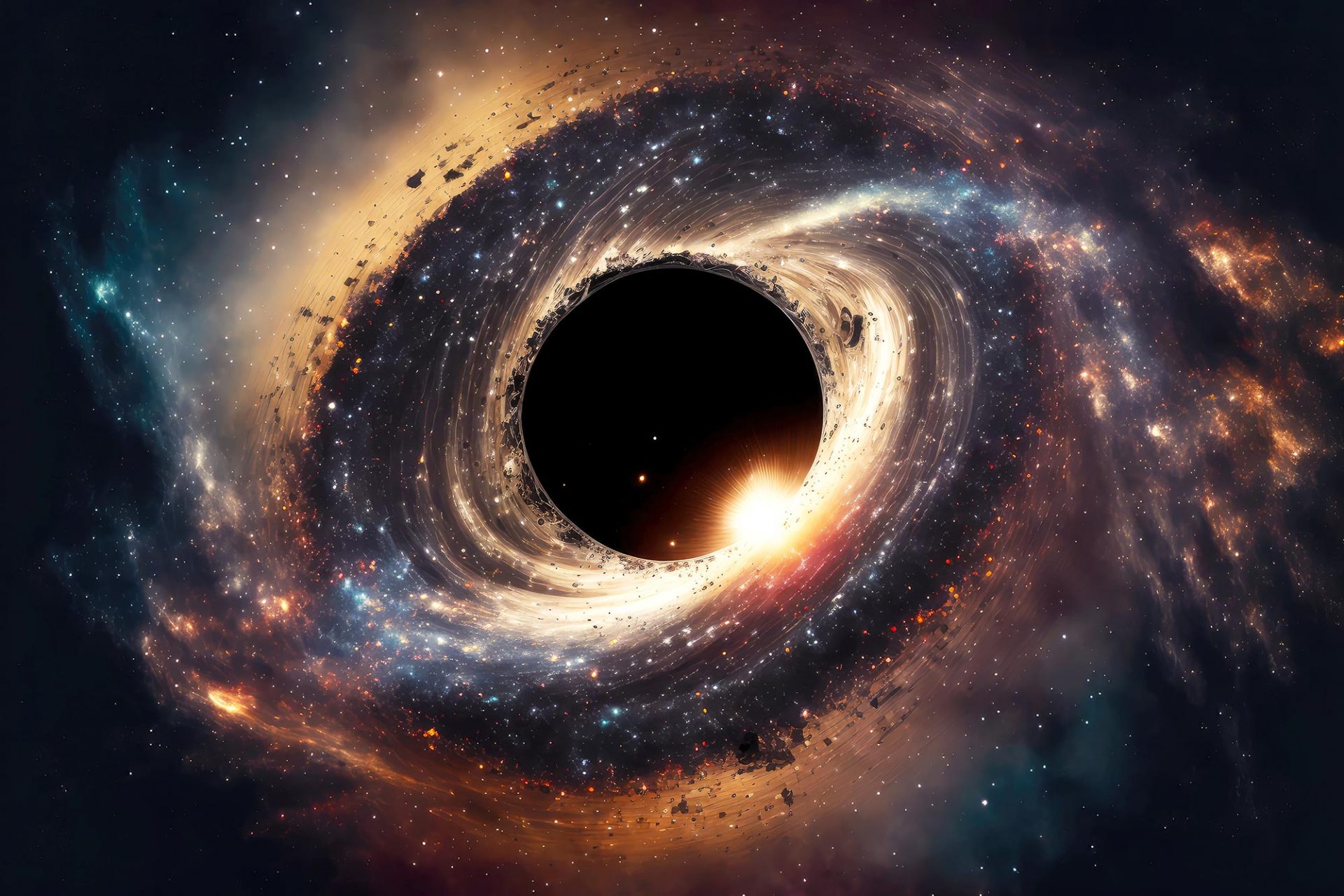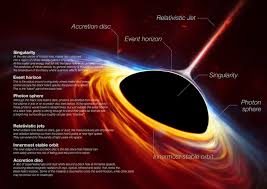
What Are Black Holes?
A black hole is a celestial object with such strong gravity that not even light can escape from it. The “surface” of a black hole, the so-called event horizon, defines the limit at which the speed needed to escape exceeds the speed of light, the speed limit of the universe. Matter and radiation can enter but cannot get out.
Two main classes of black holes are widely observed: black holes with masses between three and ten times that of the Sun are scattered throughout the Milky Way galaxy, while supermassive monsters with 100,000 to billions of solar masses are found in the centers of most large galaxies, including our own. Astronomers have long suspected the existence of an intermediate class of black holes, called intermediate black holes, weighing between 100 and more than 10,000 solar masses. Although several candidates have been identified through indirect evidence, the most convincing example to date came on May 21, 2019, when the National Science Foundation’s Laser Interferometer Gravitational-Wave Observatory (LIGO) in Livingston, Louisiana and Hanford, Washington detected gravitational waves from the merger of two stellar-mass black holes. The event, called GW190521, resulted in a black hole weighing 142 suns.

Stellar-mass black holes form when a star with more than 20 times the mass of the sun runs out of nuclear fuel in its core and collapses under its own weight. The collapse triggers a supernova explosion, blowing off the outer layers of the star. But if the shattered core contains more than about three times the mass of the Sun, no known force can prevent it from collapsing into a black hole. The origin of supermassive black holes is still poorly understood, but we know they exist from early in the life of a galaxy.
Once a black hole is born, it can grow by accumulating material that falls into it, such as gas separated from neighboring stars or other black holes.
In 2019, astronomers captured the first image of a black hole using the Event Horizon Telescope (EHT) – an international collaboration that networks eight radio telescopes on Earth into a single Earth-sized dish. It appears as a dark circle surrounded by a surrounding disk of hot, glowing material. This supermassive black hole is located at the center of a galaxy called M87, about 55 million light-years away, and weighs more than 6 billion solar masses. Its event horizon is so wide that it could extend beyond our planet, as well as most of our solar system.
Another important discovery related to black holes was made in 2015, when scientists for the first time detected gravitational waves, ripples in the fabric of space-time predicted a century ago by Albert Einstein’s theory of general relativity. LIGO found the waves in an event called GW150914, when two orbiting black holes spiraled into each other and merged 1.3 billion years ago. Since then, LIGO and other facilities have used the gravitational waves they generate to observe numerous black hole mergers.

While these are exciting new methods, astronomers have been studying black holes for decades based on the various forms of light they emit. While light cannot escape a black hole’s event horizon, the enormous tidal forces around it heat nearby material to millions of degrees, emitting radio waves and X-rays. Some of the material orbiting even closer to the event horizon can be ejected, forming a beam of particles traveling close to the speed of light and emitting radio waves, X-rays, and gamma rays. The light beams from a supermassive black hole can reach hundreds of thousands of light years into space.
NASA’s Hubble, Chandra, Swift, NuSTAR, and NICER space telescopes, as well as other missions, continue to take the measure of black holes and their environments so we can learn more about these enigmatic objects and their role in the evolution of galaxies and the universe at large.
See our Black Hole Gallery for additional images, simulations and visualizations about black holes.
- Are Canned Beans Healthy? Nutrition, Benefits, and Downsides

- What is the message of the song “Imagine” by John Lennon brainly?

- What is the mean of Wind of Change ?

- The Key Vitamin That Prevents Dementia

- Coffee May Help Protect Against AFib, Challenging Advice to Avoid It
- What Is The Difference Between Being Hard of Hearing and Deaf?



Good morning all guys ❤️
Thanks 💯
Thanks for sharing ❤️
Thank for Sharing 💞
Thanks millions 💌
Can enter but cannot get out…ummm!
Black holes are the seductive dragons of the universe, outwardly quiescent yet violent at the heart.
Black holes are interesting and scary with strong gravity….
With gratefulness for sharing knowledge….
Thanks for sharing knowledge.
Done ✅
Thanks.
This topic is amazing to Thank a lot of your sharing knowledge.Be healthy 💕🥰
Thank you for knowing so much about space